Welcome to Catnapin's
Herrerasaurus ischigualastensis
Up Close and Personal
mounted reconstruction on lone from Texas Memorial Museum at Austin
"Dinosaurs of Texas" Exhibit at the Grace Museum 2003-04
*****************************************************************
This nearly complete fossil was found in Argentina. A Herrerasaurus is found in Texas but only a few pieces.
|
Period: Triassic Location: Ischigualasto Formation, Valle Fertil, San Juan, Argentina Original in Collection: Museo de Ciencias naturales, Universidad Nacional de San Juan, Argentina Reproduction in Collection: Texas Memorial Museum at Austin Size: 13 feet long, 4 feet tall, 460 pounds |
*****************************************************************
Safe Shipment
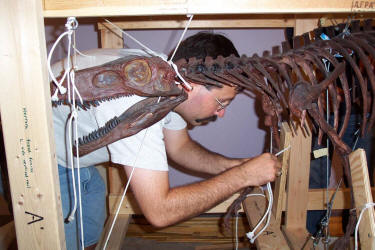
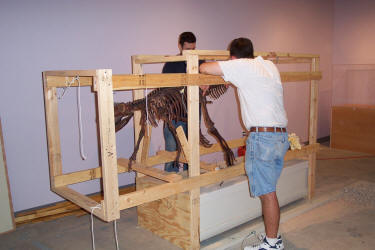
Fast Predator
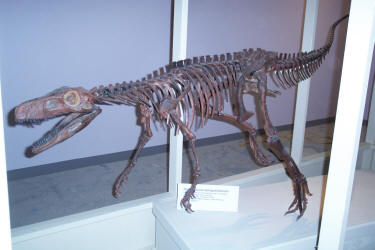
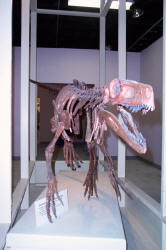
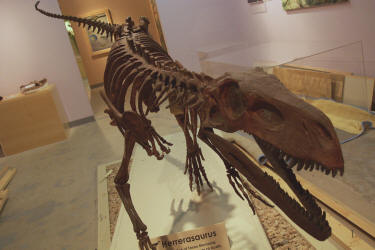
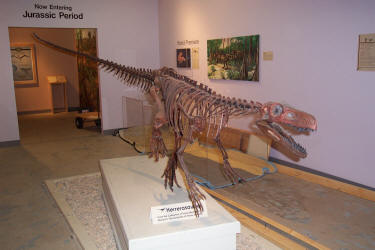
The Head
Notice the holes in the animals skull. The orbit (eye) is the big round one. There are two behind the eye (one is sort of on top) making it a Diapsid skull. One in front of the eye that makes it a dinosaur. Lower jaw has a large hole that is actually a joint, making makes it a Theropod. Nostrils are at the end of the muzzle.
Notice the teeth. They are all the same except in size.
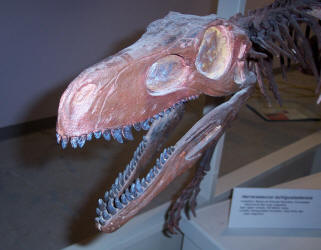
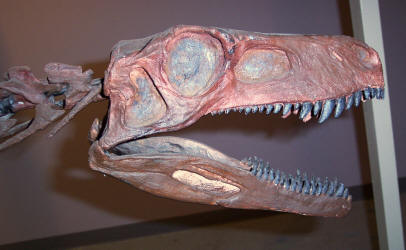
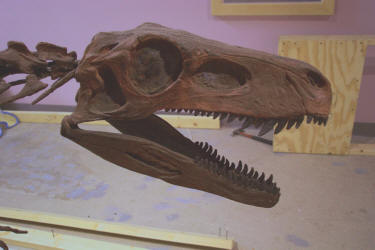
Shoulder and Ribs
Theropods have a strap-like scapula. Herrerasaurus an early version.
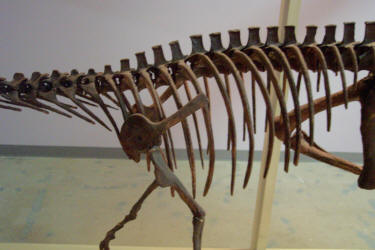
Hip
Notice the strong hip joint. There are three sacral vertebra to support the animal.
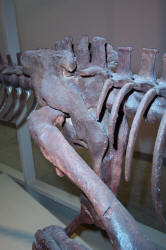
Neck Vertebra
Notice the long thin stabilizers in the neck vertebra.
.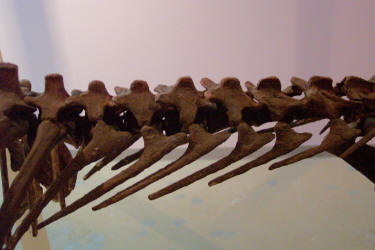
Body Vertebra
Notice the short but stout spines.
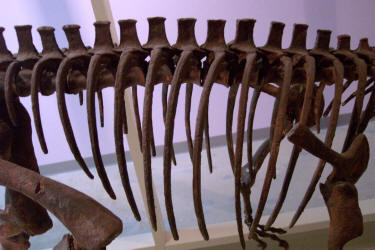
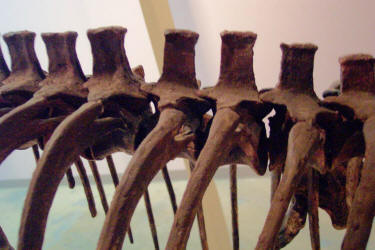
Tail Vertebra
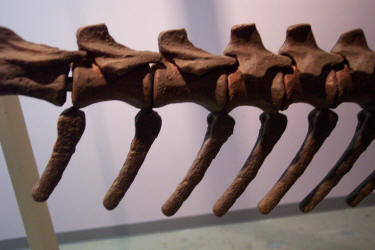
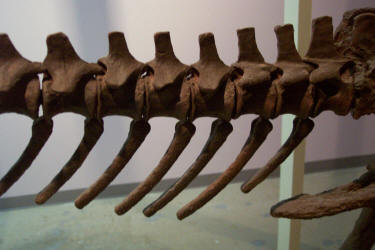
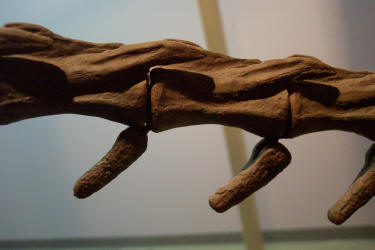
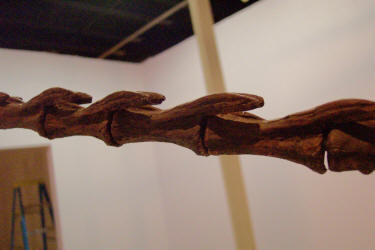
Rear Feet
This is a true biped. It walks on its rear feet only. This is an early Theropod. It still has all five toes but two of them are reduced in size.
Notice the claws. All Sauropods have claws.
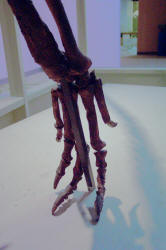
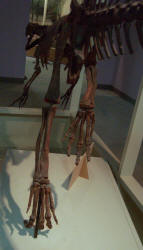
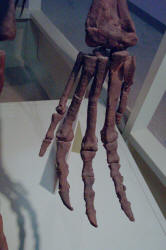
Hand
Notice the elongated hand bones and claws. These are characteristic of Theropods. Notice the pinky finger is much shorter that the others. Dinosaurs do not have as many philanges (finger bones) on this finger. As Theopods evolve they tend to loose fingers. A few only had two. Birds only have one.
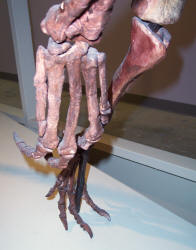
*****************************************************************